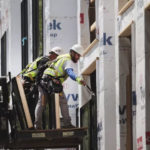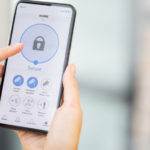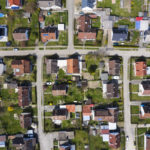iPro has teamed with Treehouse Foster Care in order to raise money for foster care and foster children. With your help, we can provide them with the little things that often make a big difference — school supplies and sports shoes, properly fitting clothing, or a gift during the holidays.
WHAT IS FOSTER CARE?
Foster care is a temporary living arrangement for abused, neglected, and dependent children who need a safe place to live when their parents or another relative cannot take care of them. Often their families face issues such as illness, alcohol or drug addiction, or homelessness. Children are placed with licensed foster families, relatives, or in group care facilities while social workers and judges work with their families toward safe reunification or another permanent living situation.WHY DO KIDS ENTER FOSTER CARE?
Kids enter foster care through no fault of their own. All have experienced severe abuse and/or neglect due to a crisis of parenting. Family stress factors such as poverty, substance abuse, incarceration, mental illness, and homelessness have forced the state to intervene in the lives of families to protect children from abusive and neglectful situations. In Washington State, approximately 65% of all youth enter the foster system because of neglect, while 35% enter because of physical and sexual abuse. Child abuse and neglect occurs in all cultural, ethnic, occupational, and socioeconomic groups.WHAT HAPPENS TO CHILDREN ONCE THEY ENTER FOSTER CARE?
Once the court has decided that a child should be removed from his or her parent’s custody and placed in foster care, the birth parents and the child are assigned a social worker. Federal law requires that all children have a “permanency goal”—that is, there must be a clearly defined plan for the child to safely leave foster care. The initial goal for almost all children who enter the system is to eventually return to their birth parents’ care (i.e. reunification). Approximately 65% of children who enter foster care eventually return to their birth parents after they have completed necessary counseling and treatment. When families are unable or unwilling to make the life changes necessary to ensure they can safely parent their children, other permanent, alternative options are sought. These options usually include adoption, a guardianship with another family member of friend, or remaining in foster care until the child turns 18.WHY DO KIDS IN FOSTER CARE TEND TO MOVE FROM HOME TO HOME?
Placement stability is a priority for Children’s Administration, but it is still common for kids in foster care to experience multiple changes in their home placement. While most children do not experience more than two placement changes on average during their time in care, some youth may experience ten or more placement changes. Studies indicate that there are several factors that can reduce the number of home placement changes that a child will experience during their time in care, including:- An early health assessment (physical, mental, emotional) when the child enters care
- Training for foster parents to handle behavioral issues and special needs stemming from trauma
- Stronger social support for foster parents and caregivers
- More qualified homes and a more comprehensive match-making process between youth and caregiver
- Policies at the state, county, and agency level that influence initial placement decisions to ensure that first placements are permanent placement.
WHO ARE FOSTER KIDS?
Kids in foster care are just like any other child you know with one difference – they have all suffered trauma and loss through no fault of their own. They have the same needs, dreams, and unique potential as all children, and seek the same opportunities that all kids equally deserve to build a bright and promising future – for their own well-being, and to be responsible and contributing members of their community. Foster youth demonstrate incredible resilience as they navigate their experience in foster care. Click here to meet our kids and hear their stories.HOW DO KIDS IN FOSTER CARE CONNECT TO TREEHOUSE?
After a child is placed in foster care, the DSHS social worker assigned to their case can make a referral for Treehouse services. Treehouse offers a range of programs to help level the playing field for kids in foster care by providing the kinds of experiences and opportunities that all kids equally deserve. Once a child connects with Treehouse, they will continue to have access to education services, regardless of what happens with their placement status. Many of the youth who eventually return to the care of their birth families continue to need and deserve continuity of support for their educational success.WHAT ARE SOME OF THE BIGGEST CHALLENGES KIDS IN FOSTER CARE FACE?
Life in foster care can be extraordinarily challenging and disruptive for kids and teens, emotionally and developmentally. Separated from their family, foster youth face tremendous obstacles in school and in life. Research shows that kids in foster care suffer from Post Traumatic Stress Disorder at a higher rate than returning combat war veterans, and more than half struggle with mental health challenges stemming from the trauma they’ve endured. Academically, foster youth face an uphill battle due to changes in home placements and school transitions, lack of basic skills, and emotional upheaval. Access to important socialization opportunities – like music lessons and team sports – is limited, as is access to funding for essential needs like clothing, shoes, school supplies, haircuts, and funding for school fees.HOW DOES TREEHOUSE HELP FOSTER YOUTH AND FAMILIES?
Treehouse serves more than 7,000 foster youth each year through integrated and transformative programming to help them succeed in school, fulfill key material needs, and participate in essential childhood experiences that all kids equally deserve. Our services are strategically tailored to help them graduate from high school with a plan for their future. Treehouse also serves caregivers by providing educational and financial support to help them navigate the challenges and opportunities of fostering, to provide the best possible experience for the youth in their care. Treehouse also collaborates with social workers, school systems, government agencies, and policymakers to improve outcomes for youth in foster care by removing barriers to academic achievement, and developing and supporting policies that promote the short and long-term well-being of foster youth. Learn more about the impact of our legislative advocacy here.WHAT AGE(S) DOES TREEHOUSE SERVE?
Treehouse provides clothing and other basic needs and support for extracurricular and school activities for foster kids ages 0 – 21. Treehouse’s Graduation Success services are available foster youth in King County in middle and high school. Educational Advocacy services are available to foster youth statewide from Pre-K to 12th grade.WHY IS HIGH SCHOOL GRADUATION FOR FOSTER YOUTH A KEY PRIORITY FOR TREEHOUSE?
Treehouse is committed to closing the graduation gap for students in foster care in King County by 2017. Currently, the graduation rate for foster youth in King County is approximately half the rate of their peers. There are a number of key issues facing students in foster care that contribute to this disparity, including but not limited to: lack of systems coordination between child welfare and schools, transitions in home and school placements, and unaddressed special education needs stemming from trauma and lack of early childhood education. Without a high school diploma and a plan for their future, foster youth experience disproportionately high rates of poverty, homelessness, incarceration, mental illness, unplanned pregnancy, and substance abuse when they leave care. Treehouse is uniquely positioned to improve these outcomes by changing the trajectory of youth in foster care through integrated, research-based programs that help our youth make it to high school graduation day and beyond.HOW CAN I HELP MAKE A DIFFERENCE?
Treehouse relies on the support of donors, businesses, policymakers, partner agencies and volunteers to help give 7,000 foster youth a childhood and a future each year. In fact, Treehouse is 85% privately funded. We invite you to explore a number of ways you can Get Involved, and share our mission with your friends, family, colleagues, and social networks!












